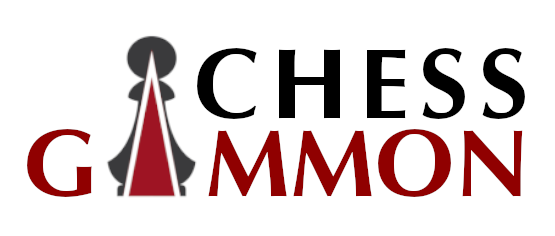- Introduction to the Pirc Defense
- History of the Pirc Defense
- Key Principles of the Pirc Defense
- Common Variations of the Pirc Defense
- Tips for Playing the Pirc Defense Successfully
- Famous Players Known for Using the Pirc Defense
- Resources for Further Study on the Pirc Defense
Introduction to the Pirc Defense
Hey there, fellow chess enthusiasts! Today, we’re diving into the exciting world of the Pirc Defense. If you’re looking to spice up your chess game and catch your opponents off guard, then look no further than the Pirc Defense.
So, what exactly is the Pirc Defense? Well, it’s a chess opening that starts with the moves 1. e4 d6. This defense is known for its flexible and solid nature, allowing Black to develop their pieces harmoniously and strike back at the right moment. By choosing the Pirc Defense, you’re signaling to your opponent that you’re ready to play an unconventional and dynamic game.
Now, you might be wondering why it’s called the Pirc Defense. Well, it’s named after the Slovenian Grandmaster Vasja Pirc, who popularized this opening in the 1930s. Pirc believed in the importance of solid pawn structures and piece activity, which are key principles of this defense.
One of the reasons why players are drawn to the Pirc Defense is its ability to transpose into various pawn structures and play styles. Whether you prefer a calm positional battle or a sharp tactical skirmish, the Pirc Defense can accommodate your playing style.
As with any chess opening, it’s essential to understand the key ideas and strategies behind the Pirc Defense to unleash its full potential. By mastering this defense, you can surprise your opponents, gain a strategic
History of the Pirc Defense
Hey there, chess enthusiasts! Today, we’re going to delve into the fascinating history of the Pirc Defense. This unique opening strategy is named after the Slovenian Grandmaster Vasja Pirc, who popularized it in the 1930s.
The Pirc Defense, also known as the Ufimtsev Defense or the Modern Defense, is considered to be a hypermodern opening, where Black allows White to occupy the center with pawns before challenging it from the sides. This strategy aims to provoke White into overextending their pawn structure, creating potential weaknesses that Black can exploit later in the game.
The Pirc Defense was initially viewed as somewhat unorthodox, as it defied traditional opening principles by not contesting the center immediately. However, in the mid-20th century, players like Bent Larsen, Viktor Korchnoi, and later, Grandmasters like Alexander Khalifman and Aleksandar Beliavsky, successfully employed the Pirc Defense at the highest levels of competitive chess.
One of the defining characteristics of the Pirc Defense is its flexibility. Black has several setup options within the opening, allowing players to choose from different pawn structures and piece placements based on White’s responses. This adaptability makes the Pirc Defense a popular choice for players who prefer strategic maneuvering over sharp tactical play.
Over the years, the Pirc Defense has evolved and adapted to modern chess theory
Key Principles of the Pirc Defense
Are you looking to add a versatile and solid defense to your chess repertoire? Look no further than the Pirc Defense! In this section, we will delve into the key principles that underpin this intriguing opening strategy.
First and foremost, the Pirc Defense is all about creating a strong pawn structure that provides a solid foundation for your pieces. By fianchettoing your dark-squared bishop on g7, you not only control the center of the board but also secure your king’s position. This setup not only ensures solid defense but also offers excellent attacking opportunities later in the game.
Another crucial aspect of the Pirc Defense is flexibility. Unlike other more rigid openings, the Pirc allows for a wide range of piece placements and plans. This adaptability allows you to react to your opponent’s moves while maintaining a solid position on the board. Remember, in chess, adaptability is key, and the Pirc Defense offers just that.
In addition, the Pirc Defense emphasizes piece development over early pawn pushes. By focusing on bringing your pieces into the game first, you can create a harmonious coordination between your forces. This principle not only ensures better piece activity but also leads to a more efficient defense against your opponent’s threats.
Furthermore, central control is a fundamental principle in the Pirc Defense. While you may allow your opponent to occupy the center early on, your strategy revolves around undermining their central control later in
Common Variations of the Pirc Defense
Ah, the world of chess is vast and filled with endless possibilities. When it comes to the Pirc Defense, there are several common variations that you should be aware of to navigate your way through the game successfully. Let’s dive into some of these variations to help you better understand your options:
Classical Variation: This is the most solid line for Black in the Pirc Defense. Black typically plays …c6 followed by …d6 to counter White’s center control. It’s a reliable choice for players who prefer a more strategic approach.
Byrne Variation: Named after American grandmaster Robert Byrne, this variation involves Black playing an early …Nbd7 before committing to …d6. It’s a flexible option that allows Black to observe White’s setup before deciding on their own strategy.
150 Attack: In this aggressive variation, White aims to quickly build a strong pawn center with f4 and e5. Black must be prepared to withstand White’s attacking intentions and look for counterplay on the queenside.
Austrian Attack: White goes for a kingside pawn storm with h4 and g4 in this variation, aiming to create weaknesses in Black’s camp. Black needs to be vigilant and ready to defend
Tips for Playing the Pirc Defense Successfully
So, you’ve decided to try out the Pirc Defense in your chess games. Congratulations! This solid and flexible opening can lead to exciting positions on the board. Here are some tips to help you navigate through the complexities of the Pirc Defense:
1. Understand the Key Ideas
It’s important to grasp the fundamental ideas behind the Pirc Defense. Know that you will often play with a solid pawn structure and look for counterattacking opportunities. Understanding the key concepts will help you make informed decisions during the game.
2. Develop Your Pieces Efficiently
Just like in any other opening, it’s crucial to develop your pieces efficiently. Avoid moving the same piece multiple times in the opening phase and aim to control the center of the board. By developing your pieces harmoniously, you’ll have a stronger position to launch your attacks.
3. Be Patient and Watch for Tactical Opportunities
The Pirc Defense is all about patience and waiting for the right moment to strike. Keep an eye out for tactical opportunities, such as pawn breaks or piece sacrifices. Don’t rush into aggressive actions without proper calculation – timing is key in this opening.
Famous Players Known for Using the Pirc Defense
When it comes to the Pirc Defense, there are several chess players who have become famous for their expertise in using this opening strategy. These players have mastered the intricacies of the Pirc Defense and have demonstrated its effectiveness at the highest levels of competition. Let’s take a look at some of the notable players known for their skillful use of the Pirc Defense:
Alexander Beliavsky: A Ukrainian grandmaster known for his solid and strategic style of play, Beliavsky has been a longtime advocate of the Pirc Defense. His deep understanding of the opening has helped him achieve numerous victories using this setup.
Mihail Marin: A Romanian grandmaster and prolific chess author, Marin is well-known for his expertise in the Pirc Defense. He has written extensively on the opening and has provided valuable insights for players looking to improve their skills in this area.
Viktor Korchnoi: The legendary Soviet and Swiss chess grandmaster was known for his versatility in using different opening strategies, including the Pirc Defense. Korchnoi’s innovative and creative approach to the game made him a formidable opponent for any player.
Resources for Further Study on the Pirc Defense
So you’ve decided to explore the fascinating world of the Pirc Defense – congratulations! This opening may be lesser-known compared to the more popular defenses like the Sicilian or the French, but it definitely has its own unique charm and strategic nuances.
If you’re looking to delve deeper into the intricacies of the Pirc Defense, there are plenty of resources available to help you sharpen your skills and understanding of this opening. Here are some valuable resources that will guide you on your journey to mastering the Pirc Defense:
1. Books
One of the best ways to deepen your knowledge of the Pirc Defense is by studying books written by renowned chess authors. Some highly recommended books on the Pirc Defense include “The Pirc Defense” by Jovanka Houska and “The Modern Defense” by Jon Speelman. These books provide detailed analysis, strategic insights, and practical tips to help you navigate the complexities of the Pirc Defense.
2. Online Courses and Videos
In today’s digital age, online courses and videos have become increasingly popular among chess enthusiasts looking to improve their skills. Websites like Chess.com, Chessable, and YouTube channels like the Saint Louis Chess Club offer a plethora of resources dedicated to the Pirc Defense. From beginner tutorials to advanced analysis, you can find a wealth of information online to enhance your understanding of this opening.






